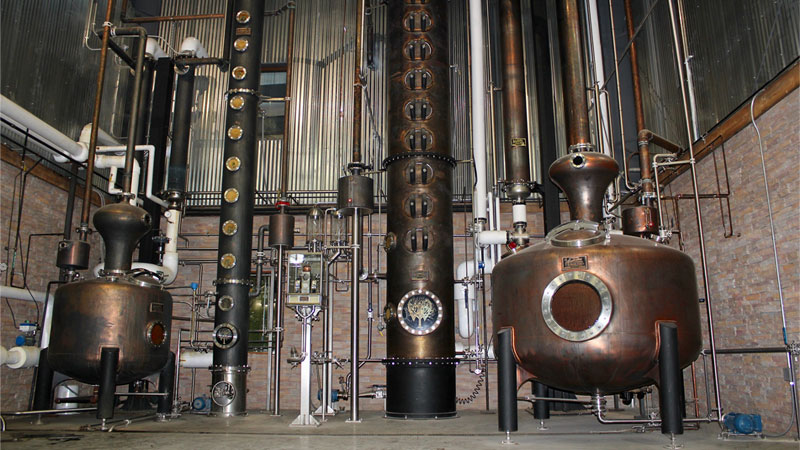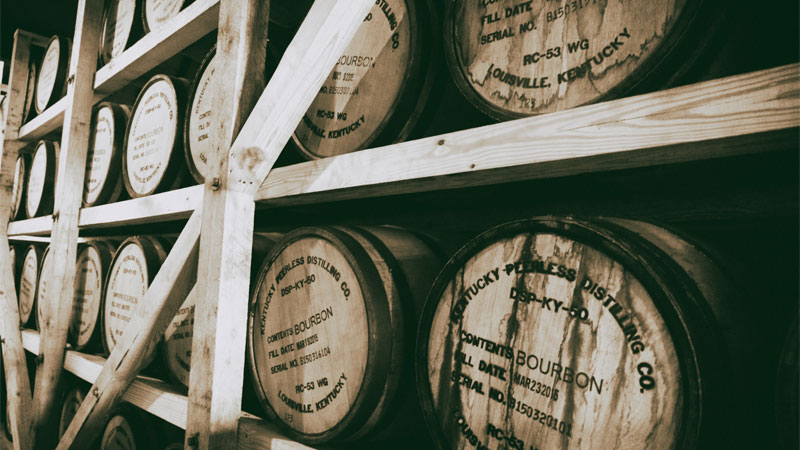All September on VinePair, we’re turning our focus to America’s spirit: bourbon. For our third annual Bourbon Month, we’re exploring the industry legends and innovators, our favorite craft distilleries, new bottles we love, and more.
Next time you’re in the liquor store, count the number of whiskey labels that say “sour mash.” The term is openly touted as a key selling point for many brands. Even the distilleries that don’t mention it very likely still do it. Sour mashing is one of the most widely practiced, near-universal steps in the production of bourbon, rye, and other American whiskeys, central to the identity of the most famous, longstanding brands.
But not everyone agrees that it’s the best way of making whiskey.
Don’t miss a drop!
Get the latest in beer, wine, and cocktail culture sent straight to your inbox.
“Sour mash” refers to a fermentation method that originated in the earliest days of whiskey making on the American frontier. Dr. James C. Crow, a distiller in the 1830s, is often credited with perfecting it by applying scientific rigor to better standardize the process. In sour mashing, a portion of liquid left over from distillation, called backset or stillage, is recovered and added to the new mash — grains and hot water — for the next batch of whiskey.
Sour mashing does a few important things. Primarily, it helps regulate the pH of the new mash, creating an acidic environment that allows yeast to flourish while keeping bacteria, which can infect the mixture and create off flavors, at bay. Before modern sanitization was possible, sour mashing helped distillers facilitate fermentation and ensure a measure of consistent flavor from batch to batch. The stillage also contains dead yeast and nutrients that the fresh yeast can feed on. Plus, adding hot stillage to a mash tub saves energy, as it raises the mixture’s temperature for the cooking process, and it reduces the amount of waste byproducts the distillery must process.
But a few American distillers are setting aside the sour mash technique, saying it’s no longer necessary with today’s sanitization methods. Not only that: There’s another way to create consistency from batch to batch, even more effective than through sour mashing. This technique, called sweet mashing, yields cleaner and more complex flavors and positively impacts other parts of the whiskey-making process, including distillation and maturation. Rather than adding stillage to the mash, the distiller simply leaves it out and adds fresh yeast for each fermentation.
“One of our goals is consistency,” says Dr. Pat Heist, a microbiologist and co-founder of Wilderness Trail Distillery in Danville, Ky. “When you look at all the different ingredients that go into the process — the water, the yeast, the grains — those things can be kept very consistent.” But maintaining the consistency of backset, he explains, is harder because of the constant possibility of contamination. “If my goal as a distiller is to make a very consistent whiskey, then why would I purposely add an ingredient that is inherently inconsistent? That’s probably one of the best reasons why we use a sweet mash.”

Small Change, Big Impact
Another reason is that Heist and his co-founder, Shane Baker, like the flavors and character that sweet mashing produces. Sweet mashes typically have a higher pH, which Heist says results in a softer mouthfeel in the whiskey. “I hesitate to say the word smooth, but … it lacks the burn that you get in sour mash recipes,” he explains. Wilderness Trail offers most of its whiskeys at 50 percent ABV or higher, and Heist says consumers often remark on how drinkable they are even at barrel proof. “It’s just a softer distillate,” he says. “It has become a hallmark of our flavor profile.”
Sweet mashing is the foundation of the bourbon and rye made at Louisville’s Kentucky Peerless Distilling Company; because of it, says master distiller Caleb Kilburn, the whiskeys contain more flavor than they otherwise would. “Sweet mash produces a very sweet, very floral beer; when we distill it, we can be extremely aggressive, harvesting as much flavor as possible,” he says, explaining that, since sour mashing inherently yields some off flavors, distillers have to “clean it up” at the distillation stage. “While it’s good to get that sour grain note out or at least reduce its impact, there’s a ton of collateral damage” to other flavors, he adds.
Thanks to sweet mash, Kilburn is able to distill to a lower proof of 130, which retains more of the delicate flavor and aroma compounds created in fermentation. Plus, he has to add less water to bring the distillate to barrel-entry proof — again, helping to preserve flavor. “You get more flavor from the fermentation, from the grains, from the still [when] doing sweet mash and it makes it a little more balanced with the barrel,” Kilburn says. Sweet mashing’s benefits resonate all the way down the line. Since Peerless bottles all of its whiskeys at barrel proof, the sweet mash-driven profile gets carried into the bottle and, eventually, the drinker’s glass.

Worth the Effort
Sweet mashing is not without its challenges. It’s expensive and time consuming: You use more energy to heat the mash tub, and have to figure out how to get rid of all the backset in an environmentally responsible way. Plus, although every distillery has high sanitization standards, sweet mash producers must go even further to ensure no possibility of an infection or contamination that would ruin a batch. There are just a handful of sweet mash distilleries, all of them started in the last 10 years; in addition to Wilderness Trail and Peerless, Castle & Key Distillery, Neeley Family Distillery, Hard Truth Distilling Company, and Twin Creeks Distillery are doing sweet mash, despite the added labor and expense.
But distillers who sweet mash say it’s worth it, though few will call their flavors better than those made via sour mashing — just different. Kilburn notes that, since Peerless is a young distillery, “everything was on the table” when getting started; he wasn’t compelled to create a certain whiskey character or uphold an established flavor profile. Indeed, although every modern distillery has the capability to do sweet mash, no longtime players have made the leap (though Woodford Reserve has released some small-scale experiments). After decades or even centuries of making sour mash whiskey, changing the process would change the identity of their products.
Bacterial contamination is even desirable for some distilleries. “People who have been in the industry a while have commented on the positive influences that their ‘house bugs’ can have on their flavor profile,” Heist says, noting that his and Baker’s other company, Ferm Solutions, even provides cultivated bacterial byproducts to add to fermenters, which yield certain flavors a distillery wants in its whiskey. “So bacterial contamination isn’t always a bad thing.”
The point of sweet mashing isn’t to outdo sour mash, but to showcase a different array of flavors. “It’s not better or worse,” Kilburn says. “It’s just what your preference is.”
This story is a part of VP Pro, our free content platform and newsletter for the drinks industry, covering wine, beer, and liquor — and beyond. Sign up for VP Pro now!


